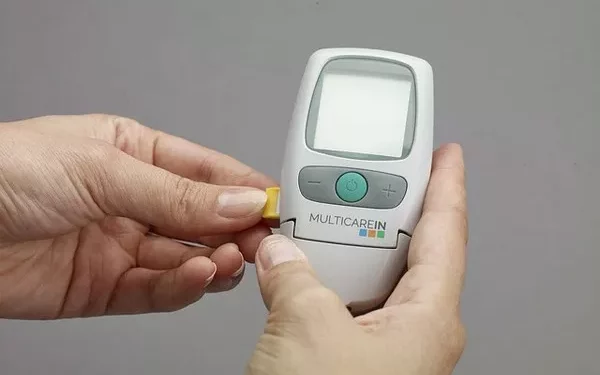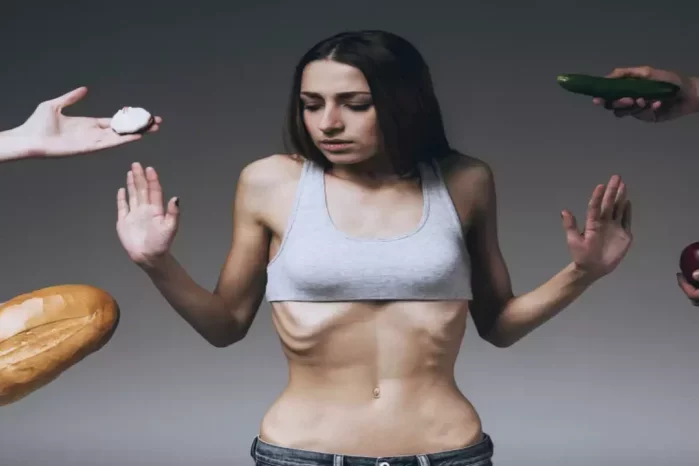A diabetic stroke, also known as a cerebrovascular accident (CVA), occurs when blood flow to a part of the brain is interrupted or reduced, leading to brain damage. This can result in a variety of symptoms, depending on the area of the brain affected and the severity of the event. People with diabetes, particularly type 2 diabetes, are at an increased risk of stroke due to the associated vascular complications. Understanding the signs and symptoms of a diabetic stroke, as well as the sensations and experiences individuals may feel during such an event, is crucial for timely intervention and treatment. In this article, we will explore the sensations associated with a diabetic stroke, risk factors, preventative measures, and the importance of prompt medical attention.
Understanding Stroke in People with Diabetes
The Connection Between Diabetes and Stroke
Diabetes, especially type 2 diabetes, is a significant risk factor for stroke. The relationship between diabetes and stroke is primarily due to the impact of chronic high blood sugar levels on blood vessels. Elevated glucose levels can cause endothelial dysfunction, leading to atherosclerosis (hardening and narrowing of the arteries) and increased risk of blood clots. These conditions compromise blood flow and can result in ischemic strokes (caused by a blockage) or hemorrhagic strokes (caused by bleeding).
Individuals with diabetes are more likely to develop hypertension, dyslipidemia (abnormal cholesterol levels), and obesity, further increasing the risk of stroke. Additionally, diabetes can lead to diabetic cardiomyopathy, a condition that affects the heart muscle, potentially contributing to stroke risk.
Types of Stroke
There are two primary types of stroke, both of which can affect people with diabetes:
Ischemic Stroke: This is the most common type of stroke, accounting for approximately 87% of all cases. It occurs when a blood clot or atherosclerotic plaque blocks a blood vessel supplying the brain, leading to reduced blood flow and oxygen to brain tissue.
Hemorrhagic Stroke: This type of stroke occurs when a blood vessel in the brain bursts, causing bleeding into or around the brain. Hemorrhagic strokes are less common but can be more severe than ischemic strokes.
What Does a Diabetic Stroke Feel Like?
The sensations and symptoms of a stroke can vary widely depending on the type, location, and severity of the event. However, some common experiences and sensations are frequently reported by individuals having a stroke.
1. Sudden Onset of Symptoms
One of the hallmark features of a stroke is the sudden onset of symptoms. These symptoms can develop quickly and may vary in intensity. The rapid appearance of these signs is a critical indicator that medical attention is urgently needed.
2. Numbness or Weakness
Many stroke victims report a sudden sensation of numbness or weakness, often affecting one side of the body. This may include:
Face: Drooping or numbness on one side of the face, causing difficulty in smiling or making other facial expressions.
Arm: Weakness or numbness in one arm, making it challenging to lift or hold objects.
Leg: Similar sensations may occur in one leg, affecting the ability to walk or maintain balance.
The feeling of weakness or numbness can range from mild to severe and may feel like a loss of control over the affected limb.
3. Sudden Confusion or Trouble Speaking
A stroke can impair cognitive functions, leading to sudden confusion or difficulty understanding and processing information. Individuals may experience:
Aphasia: Difficulty speaking or finding the right words, often resulting in slurred or garbled speech.
Difficulty Understanding Speech: Trouble comprehending spoken language, which can lead to inappropriate or nonsensical responses.
These symptoms can be distressing and disorienting, as individuals may struggle to communicate or make sense of their surroundings.
4. Vision Problems
A stroke can affect the visual processing areas of the brain, leading to sudden vision changes. This may include:
Blurred Vision: A common sensation where objects appear out of focus.
Double Vision: Seeing two images of a single object.
Loss of Vision: Partial or complete loss of vision in one or both eyes, often described as a “curtain” falling over the field of vision.
These vision changes can be alarming and may contribute to a sense of confusion or disorientation.
5. Dizziness and Loss of Balance
Sudden dizziness, loss of balance, or lack of coordination is another common symptom of a stroke. Individuals may feel:
Vertigo: A spinning sensation, as if the room is moving around them.
Loss of Coordination: Difficulty walking or standing, leading to a higher risk of falls.
These symptoms can be particularly disconcerting and may make it challenging for the affected individual to move or remain upright.
6. Severe Headache
A sudden and severe headache, often described as the “worst headache of my life,” can be a symptom of a hemorrhagic stroke. This headache is typically different from other types of headaches and may be accompanied by:
Neck Pain: Pain or stiffness in the neck, sometimes associated with subarachnoid hemorrhage.
Nausea and Vomiting: The headache may be severe enough to cause nausea or vomiting.
The intensity and sudden onset of the headache can be a critical warning sign of a stroke and should not be ignored.
7. Facial Drooping
Facial drooping, often noticeable on one side of the face, is a common symptom of a stroke. This can cause:
Asymmetrical Smile: Difficulty smiling evenly, with one side of the mouth drooping.
Inability to Close an Eye: Difficulty closing one eye, leading to dryness or irritation.
Facial drooping can be a visible sign of muscle weakness and nerve damage caused by the stroke.
Risk Factors and Prevention
Understanding the risk factors for stroke is essential for individuals with diabetes, as managing these factors can significantly reduce the likelihood of experiencing a stroke.
1. Hypertension
High blood pressure is a leading risk factor for stroke. In individuals with diabetes, hypertension can exacerbate the risk of both ischemic and hemorrhagic strokes. Maintaining blood pressure within a healthy range through lifestyle changes and medication is crucial.
2. Dyslipidemia
Abnormal cholesterol levels, particularly high levels of low-density lipoprotein (LDL) cholesterol and low levels of high-density lipoprotein (HDL) cholesterol, can increase the risk of atherosclerosis and stroke. Managing cholesterol levels through diet, exercise, and medication can help reduce this risk.
3. Smoking
Smoking damages blood vessels, increases blood pressure, and reduces oxygen supply to the brain, all of which can contribute to stroke risk. Quitting smoking is one of the most effective ways to lower the risk of stroke and improve overall health.
4. Obesity and Physical Inactivity
Obesity and a sedentary lifestyle are associated with an increased risk of stroke, particularly in individuals with diabetes. Maintaining a healthy weight and engaging in regular physical activity can help manage blood sugar levels, blood pressure, and cholesterol, reducing the risk of stroke.
5. Poor Blood Sugar Control
Chronic hyperglycemia can damage blood vessels and increase the risk of stroke. Maintaining good blood sugar control through diet, exercise, and medication can help prevent complications and reduce stroke risk.
6. Atrial Fibrillation
Atrial fibrillation (AFib) is an irregular heartbeat that can lead to the formation of blood clots in the heart. These clots can travel to the brain and cause a stroke. Managing AFib through medication or medical procedures can reduce the risk of stroke.
Importance of Prompt Medical Attention
A stroke is a medical emergency that requires immediate attention. The sooner treatment is initiated, the better the chances of minimizing brain damage and improving outcomes. Recognizing the symptoms of a stroke and acting quickly can make a significant difference in recovery.
1. FAST Acronym
The FAST acronym is a helpful tool for identifying the signs of a stroke and taking swift action:
F – Face: Ask the person to smile. Does one side of the face droop?
A – Arms: Ask the person to raise both arms. Does one arm drift downward?
S – Speech: Ask the person to repeat a simple phrase. Is the speech slurred or strange?
T – Time: If any of these signs are present, it’s time to call emergency services immediately.
2. Emergency Medical Treatment
Upon arrival at the hospital, medical professionals will conduct a thorough evaluation, including imaging studies (such as a CT scan or MRI) to determine the type and location of the stroke. Treatment options may include:
Thrombolytics: Medications that dissolve blood clots, often referred to as “clot busters,” can be administered to treat ischemic strokes.
Anticoagulants and Antiplatelet Agents: Medications that prevent further clot formation may be prescribed.
Surgery: In some cases, surgical interventions may be necessary to remove a clot or repair a ruptured blood vessel.
Recovery and Rehabilitation
The recovery process after a stroke varies depending on the severity of the stroke and the affected area of the brain. Rehabilitation is a critical component of recovery and may involve:
Physical Therapy: Helps regain strength, balance, and coordination.
Occupational Therapy: Focuses on improving daily living skills and independence.
Speech Therapy: Assists with communication difficulties and swallowing issues.
Psychological Support: Addresses emotional and psychological challenges associated with stroke recovery.
See also: What is Virta for Diabetes?
Conclusion
A diabetic stroke can present with a range of symptoms, including sudden weakness, numbness, confusion, vision changes, dizziness, severe headache, and facial drooping. Understanding these symptoms and recognizing the risk factors associated with diabetes is crucial for prevention and timely intervention. Maintaining good blood sugar control, managing blood pressure and cholesterol levels, and adopting a healthy lifestyle can significantly reduce the risk of stroke. In the event of a stroke, prompt medical attention is essential to improve outcomes and minimize brain damage. By staying informed and proactive, individuals with diabetes can better manage their health and reduce the likelihood of experiencing a stroke.
Related topics:



























